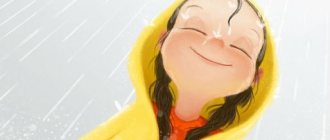Photo: UGC A creative personality is a psychological phenomenon that has been studied in sufficient detail. Many books and scientific articles have been written about him. The qualities that a creative person should have and the ways to develop them, thanks to popular publications, are replicated in countless quantities. Let's talk in more detail about those signs of a creative personality that are rarely mentioned in popular publications.
You are open to different people and ideas
Collective intelligence researchers say Michael Muthukrishna and Joseph Henrich. Innovation in the collective brain / The Royal Society: innovation is the product not of talented individuals, but of many. In other words, innovation comes from communication and the exchange of ideas.
One of the study's authors urges: if you want to be more creative, talk to people you disagree with.
You don't have to take these words literally. But if you're truly open to hearing and listening to different opinions, you're likely to have a better chance of creating something breakthrough.
Process description
In fact, no creative person has ever wondered how he manages to achieve this or that result. What did you have to endure during this sometimes very long period of creation? What stages needed to be overcome? A psychologist from Britain at the end of the 20th century, Graham Wallace, was puzzled by these questions. As a result of his activities, he identified the main points of the creative process:
- Preparation;
- incubation;
- insight;
- examination.
The first point is one of the longest stages. It includes the entire training period. A person who has no previous experience in a particular field cannot create something unique and valuable. First you have to study. This could be mathematics, writing, drawing, design. All previous experience becomes the basis. After which an idea, goal or task appears that needs to be solved, relying on previously acquired knowledge.
The second point is the moment of detachment. When long work or searches do not produce a positive result, you have to throw everything aside and forget. But this does not mean that our consciousness also forgets about everything. We can say that the idea remains to live and develop in the depths of our soul or mind.
And then one day inspiration comes. All the possibilities of creative people open up, and the truth comes out. Unfortunately, it is not always possible to achieve your goal. Not every task is within our power. The last point includes diagnosis and analysis of the result.
The most creative personalities
15 most creative personalities according to FAST COMPANY. Not all of them are celebrities, and some are known only in narrow business circles. But let's expand our horizons, learn about new people and be inspired by their achievements! So,
15. Sheila Nevins
President of HBO Documentary Films says:
I show reality without embellishment. In our films you will see fat, ugly women who cannot find a partner. I don't want to entertain you, I want you to sympathize.
Projects involving Nevins have won 21 Oscars and 47 Emmys, plus an Academy Award for a film about disabled musicians from Zimbabwe. Sheila is not afraid of anything new, so she is thinking about using the 3D effect in her films.
Watching Avatar in 3D made me feel like I was on a ride, but I appreciate the brilliant newness. And maybe I use 3D in my films.
14. Igor Pusenyak
The author of the iPhone application became a superstar in the world of computer games after inventing Doodle Jump. How did he come up with such an idea?
We wanted to come up with something interesting so that Marco (his brother, author's note) could earn more than his usual $1000 per month. We saw a chance to occupy a niche for children, which had not been explored at all in the iPhone market,” says Igor. – The only question was: will parents allow their children to take a device that costs $400?
They liked the great capabilities of the iPhone platform. Soon, Marco quit his job and the brothers began releasing even more games. They have a compact business - they each work from their own homes. Igor says that he recorded the sound of popping bubbles for one of the games in his bathroom. Their games have achieved such success that there is a question of remaking them for other platforms. And when asked whether parents will allow their children to take a device that costs $400, Igor answers simply:
They will, but only after they have played enough themselves.
Anyone who has played Doodle Jump knows that it is impossible to break away!
13. Phoebe Philo
Phoebe Philo is a prominent fashion figure. He managed to work for both Stella McCartney and Chloe. Then she left fashion to raise two children.
I am infinitely grateful to the Chloe Fashion House for giving me the opportunity to develop as a designer. This is a House with a great history, and I am glad that I have the honor of working hand in hand with incredibly talented people. These four years have been absolutely wonderful for all of us, and I wish my colleagues even greater success.
But she returned and took the post of creative director of Celine. Since then, a new era has begun for this brand.
12. C. Martin Harris
Dr. S. Martin Harris, 53, is a recognized expert in creating a unified computerized medical data system. He says:
Everyone involved in health care, including patients, should have quick access to this information.
US President Barack Obama says that without Harris, implementing health care reform will be, if not impossible, then difficult.
11. Jay-Z
I'm not a businessman, I'm a business myself, man.
Lines from the song "Diamonds from Sierra Leone" by Jay-Z. Well, he proved that this is indeed true. He is the richest rapper and most successful businessman. He was a promoter of the Budweiser Select beer brand, created and already sold the clothing company Rocawear for $204 million. In addition, he conducted advertising campaigns, invested in the New Jersey Nets basketball team, in nightclubs, and in the Broadway musical Fela. Jay-Z is a business himself, that's for sure.
10. Ki Lu
The head of Microsoft's Internet division previously worked for 10 years at Yahoo, where he was fired in 2008 for "slow performance." What did he do for Microsoft? By refusing to release regular updates every two years, Lu set up the work of his division so that the Bing search engine would be updated and improved constantly and continuously.
9. James Cameron
Who doesn’t know James Cameron, the creator of the most profitable and at one time the most innovative and expensive films “Titanic” and “Avatar”? Of course, everyone knows him. James is an Oscar winner and has a reputation as the main innovator of cinema, ushering in a new era - the era of three-dimensional films.
8. Hannah Jones
A philosopher by training who worked at a pirate radio station, she never thought of joining the business. But then I came to Nike’s environmental service. Jones says she joined Nike because it is more effective to influence from within than to shout from the outside. Her conclusion: a creative combination of both is the most powerful. Hannah's project is Nike's collaboration with the space agency NASA to develop ways to save water and the launch of the GreenXchange project with the non-profit organization Creative Commons - the free distribution of "green" technologies.
We need a business model where profit does not lead to littering of the environment and water pollution.
7. Chris Andersen
Former publisher Chris Anderson, 53, bought and headed TED in 2001, a company that organizes online speeches by newsmakers on the most important issues of our time. Volunteers in different countries translate these speeches into 76 languages. Many celebrities collaborate with him.
10 years ago business advisors said: “What are you doing! You will fragment your brand!” But TED has grown stronger over the years, which means people want ideas that truly inspire and stimulate them.
6. Steve Bird
Steve Bird plays a critical role in the latest debate about health care reform, without being either a doctor or a politician. He runs the Safeway supermarket chain. Steve introduced a system in which employees who take care of their health receive bonuses. Blood pressure, cholesterol levels and smoking cessation are taken into account. Byrd says the company's medical costs rose just 2% from 2005 to 2009, compared with nearly 40% for most others, a stance the company now makes law.
5. Ryan Murphy
Since kindergarten, Ryan has been begging for a subscription to Vogue. No, Ryan is not a designer or even a model; he is the producer of the acclaimed and most profitable new series of 2011, Glee. In addition, he has achieved success in all of his projects, from the series "The Best" and "Nip/Tuck" to "Eat Pray Love." Performances from Glee instantly become hits, and songs immediately end up in the iTunes online store.
4. Shiro Nakamura
Nissan's creative director has a nickname: "Fingers." Either because he is a jack of all trades, or because he plays the cello. In December, Nakamura's newest project comes out - the production Leaf electric car, the first car with "zero emissions of harmful substances." Shiro, who is almost 60 years old, does not believe that design is only the designer's self-expression.
Most designers need to understand the values of society and the people they are trying to design cars for.
3. Elizabeth Warren
Moving to create a consumer financial protection agency, Harvard Law School professor Elizabeth Warren was appointed special counsel to Barack Obama. Her responsibilities will include developing the agency's structure and searching for a person to fill the post of manager.
2. Eddie Q
Steve Jobs may be in the spotlight, but it's Eddie Cue who is the key figure at Apple. Cue is working on perhaps the most powerful web business projects of the 21st century: iTunes and the App Store, the latter of which is poised to generate $4 billion by 2012. Q's next campaign is to undermine Amazon's near-monopoly with its Kindle reader, iPad, and IBOOK.
1. Lady Gaga
Sponsors think she's busy with pink boas, but she's talking about online branding strategies. Music, video, design, marketing - Gaga has mastery in all areas. A talented performer or a talented businessman?
Nobody commands the public's attention quite like Gaga. It's like an explosion: bang! – and immediately millions of eyes are focused on your brand.
Gabe McDonough
“It's designed for the online generation,” says MAC Cosmetics CEO John Demsey, with whom Lady Gaga created the new lipstick shade. She works tirelessly. He stands up for his fans and always tries to be close to his “monsters”. Gaga is, without a doubt, a phenomenon and a successful product made by the Lady herself.
Search for new experiences
Creative individuals strive for new experiences . They love to experience them, they specifically look for them. From them creators draw material for their creations. Curiosity, the search for new sensations, emotionality, sensitivity, and developed imagination are the engine of their creative activity.
Many people use meditation to be more productive. It optimizes emotions, relieves anxiety, stimulates mental clarity, which allows you to tune in to the creative process.
Meditation
Creative person and society
A creative person and society are in a difficult relationship, since the activities of such an individual are not always clear to others. Pursuing the goals of creative self-development, a creative person is capable of not only creating something new, but also destroying existing foundations. He is guided by two types of motives:
- internal - the desire to express oneself in the process and create something new;
- external - to receive approval of what has been created from others.
The motive of the misunderstood genius, who offered society something new and revolutionary and was not appreciated, is one of the key ones in world culture. But human psychology, as a science, does not stand still, and scientists have found that a creative person is distinguished by one unexpected feature - sarcasm. That is, such an individual not only does not seek the approval and understanding of others, but is also capable of mocking them.
A 2015 study published in Organizational Behavior and Human Decision Processes found that sarcasm stimulates creative thinking. Sharing sarcastic remarks that don't escalate into intense conflict stimulates creativity in the speakers.
The slang word “trolling,” which has entered everyday use, has become synonymous with sarcasm in the public space of the Internet. High-quality trolling requires considerable imagination and maximum creativity. Therefore, such a pastime is not socially unacceptable behavior, but only a way to develop and demonstrate creativity.
The presence of creative abilities and instability of behavior have long been linked. There is a well-known stereotype that creative people are not of this world. They live according to the “rise and fall” system.
In 2015, Trends in the Cognitive Sciences published an article in which researchers argued that neurotic behavior is a characteristic of a person who has developed creative thinking. The authors of the study stated that neurotic states associated with mental instability and the search for external threats stimulate fantasy, and therefore contribute to the development of skills to think creatively.
Developed sensory sphere
A creative person is unthinkable without the widest range of feelings that he is capable of experiencing. It is impossible to create successfully or have the prerequisites for this, being an emotional “cracker”. Therefore, if you are prone to creativity, then you can probably notice a very impressive set of experiences behind you. This does not have to have clearly defined external manifestations: you can suppress your feelings - however, inside you, all the events that happen should find a very strong response.
I have never met any “crackers” among creative people. Most of them are extroverts and let all the colors of perception pass through them, accordingly. Therefore, they have a very strongly developed sensual component, and it is this that helps in many ways to find inspiration - their Muse. Evgeniy Tsvimadze
Activity hours
Creators often have unconventional daily routines . For example, Vladimir Nabokov’s communication with his muse usually took place early in the morning. He woke up before 6 am and sat down to work. N. M. Karamzin had a fairly traditional regime. He got up early in the morning and always went for a morning walk. After that, he had breakfast and went to the office. It was strictly forbidden to disturb him during these hours, with the exception of his wife and children.
Some creative individuals work at night and rest during the day. Often inspiration comes unexpectedly, then they drop everything and immerse themselves in work. Poets sometimes wake up at night and grab a pen to write down the lines formed in a dream. Someone works “binge” for several weeks, and then no ideas come to mind for months. Creative crises also happen.
Creative activity
To create, a person needs to immerse himself in a state of abstraction from everyday worries and achieve a level of increased concentration. Next to creative individuals there are people who are ready to create conditions for them to work. They take on all routine responsibilities themselves.
The creative process is characterized by a special state when a person experiences inspiration, satisfaction, elation
Joanne Rowling
The road from Manchester to London became fateful for the writer. It was then that she came up with the idea for a story about a young wizard, which years later brought her worldwide fame and recognition. Rowling always liked literary work, but she never took it seriously. However, within seven years after that trip, many tragic events happened in the life of Joan, at that time a secretary-translator. In the wake of all her experiences, she became inspired and began to transfer her idea to paper. The further development of events needs no introduction. Today Rowling is a popular British writer, screenwriter and director, and her Harry Potter is the favorite hero of millions of people on the planet.
Low dependence on stereotypes
It is impossible to find a person who would be absolutely free from the patterns and stereotypes supported by society. However, creative people tend to follow these patterns to the least extent. They, as a rule, are well aware of their existence, understand the role they play in social life, but can do without them without any problems, no matter what their environment expects of them.
This is true because most creative people are self-sufficient. They have a well-established opinion about themselves. On the one hand, they depend on how society perceives them. But, on the other hand, they, as a rule, do not consider it necessary to prove something and adapt to someone. They consider it necessary to clearly express their individuality, without depending on any framework that is accepted in society. After all, what is a stereotype? This is a certain established pattern, a kind of simplified standard of thought. Moreover, such a standard is often false and even primitive or ridiculous. Evgeniy Tsvimadze
Observation
For the vast majority of creators, the sources of their brilliant ideas are somewhere in the real world. Therefore, people with a creative streak tend to have a fairly well-developed ability to observe: people, phenomena, events, even objects. Moreover, this observation, as a rule, is carried out very deeply and closely, and allows one to notice nuances that do not lie on the surface.
Thanks to observation, a person distinguishes signs and objects that have minor differences, notices differences in similar things, and can reduce to a minimum the time of perception of a sign, object, process. Creative people, due to their profession, in any case have developed powers of observation. They tend to notice details. And absolutely everything - be it details of a painting, film or work of art. Evgeniy Tsvimadze
Risk appetite
Creativity itself can be called a challenge to some extent, which is why people prone to it have a natural craving for breaking the mold and taking risks. This is not about recklessness and irresponsibility, but about the willingness to do what others do not dare to do. Naturally, expecting to get some positive result from this (even if these expectations are not met).
Many people, both creative and non-creative, are risk takers. But also, according to statistics, more than 70% of people are afraid of changes in life, preferring stability to change. This can explain the fact that, having gotten used to the surrounding reality, they begin to be content with little: “There is - and good, no - of course, where am I!” Evgeniy Tsvimadze
Creative personality in everyday life
It has long been known that creative individuals tend to daydream, have a developed imagination and do not tolerate routine well, and are almost unable to cope with everyday tasks. They are able to find solutions to many complex technical problems, but it is difficult for them to clean their apartment and cook food.
Scientists from the University of Auckland, New Zealand, studied the phenomenon of a wandering mind. This is a condition in which a person is absorbed in his own thoughts and reacts poorly to external stimuli signaled by the senses, or, conversely, performs routine actions unconsciously, automatically.
According to the findings of researchers from the University of Auckland, when the mind wanders, different parts of the brain are involved, which has a beneficial effect on the development of creative abilities.
Photo: pxhere.com: UGC
Modern research
Previously, the opinions of scientists agreed that a person was either born creative or not. Today this myth is completely dispelled, and we can say with confidence that developing talents is available to everyone. And at any period of your life.
With desire and perseverance, the basic qualities of a creative person can be developed in yourself. In the only case where it is impossible to achieve a positive result is when a person personally does not want to make changes in his life.
Modern research has led to the conclusion that intellectual abilities increase if you combine logic and creativity. In the first case, the left hemisphere is involved in the work, in the second – the right. By activating as many parts of the brain as possible, you can achieve greater results.
Love for beauty
Comments in the article: Tsvimadze Evgeniy Vasilievich.
Tsvimadze Evgeniy Vasilievich, director of the Institute of Theater, Film and Television of Synergy University
It is very difficult for creative people to be in unaesthetic conditions. As a rule, they strive to at least somehow transform everything around them in order to live/work/study/spend time in a relatively beautiful, pleasantly decorated environment. This could be anything: from general cleaning to artistic wall painting - however, if you are a creative person, then you will not be lazy to spend time and effort on this.
As a rule, it is important for creative people to be in a comfortable environment. And they really try to surround themselves with a beautiful atmosphere and people. But creative people are so carried away by the process itself that they simply do not have time to create this beauty around themselves at home. Often, the everyday life that surrounds them in everyday life can most likely have such a rather sloppy appearance. I've seen this a lot - what's called creative clutter. The same director who, for example, likes to have breakfast in a restaurant on the 50th floor overlooking Moscow, will have complete chaos and chaos at home. Because when he leaves after breakfast for the whirlwind of the creative process, he simply has no time for it. Evgeniy Tsvimadze
Do you see the difference between fantasy and reality?
Edgar Allan Poe once said, “Those who dream by day understand many things that elude those who dream only at night.” You probably often imagine the “ideal life” you strive for—unlike dreams, your daytime fantasies are much easier to realize. You can think about your dreams, evaluate your capabilities, and understand what steps you need to take to make them come true. The main thing is to realize where the flight of your unbridled imagination ends and what can really be done begins.
Stages of creativity
Creativity is the creation of something new and a specific mechanism for personal development. A large number of observations and studies have shown that the main thing in creativity occurs when making the transition from seeing/listening/feeling phenomena to their logical-conceptual understanding. This leads to the fact that the psychological language that adequately reflects the creative process is a language that uses transitions from artistic (figurative) reflection of the phenomena under study to their logical-conceptual understanding, logical-semantic interpretation.
Scientists consider several stages of creativity:
- Conscious work in the form of preparation (a special active state as a prerequisite for an intuitive glimpse of a new idea);
- Unconscious work in the form of maturation (work is done on the problem, incubation of the guiding concept);
- The transition of the unconscious into consciousness as inspiration (during unconscious work, a decision comes to the area of consciousness, initially in a hypothetical form as a principle or plan);
- Conscious work as the development of an idea, including its final design and testing.
From the position of psychology, the process of creative work itself, the study of the process of preparation for it, the definition of forms, methods and means of development are of particular value. Creativity is purposeful, persistent, intense work that requires mental activity, intellectual abilities, strong-willed, emotional traits and high performance.
Note 1
Creativity can be characterized as the highest form of personal activity, which requires long-term preparation, erudition and intellectual abilities. Creativity is the basis of human life, the source of the entire range of material and spiritual benefits.
The ability to be alone
The creative process is impossible without a kind of meditation done alone with oneself. Therefore, another clear sign of a person who has a penchant for creativity is the absence of fear of loneliness. If at times you are even happy to be without company and think and feel something that you didn’t have time or opportunity for around people, then it’s quite possible that you really are inclined to creativity.
Sometimes it can be very useful to be alone: to feel yourself, to feel your personal space, to take care of yourself, to do something nice for yourself. Such time alone with ourselves can greatly nourish us, bring us a feeling of fullness and joy from ourselves. Creative people, being alone, activate all their creative processes, including. Evgeniy Tsvimadze
Paradoxes
Let's think about why the character of a creative person is so difficult to clearly analyze and structure. Most likely, this is due to a number of paradoxical traits that are inherent in such people.
Firstly, they are all intellectuals, well-grounded in knowledge, but at the same time they are as naive as children. Secondly, despite their excellent imagination, they are well versed in the structure of this world and see everything clearly. Openness and communication skills are only external manifestations. Creativity very often hides in the depths of personality. Such people think a lot and conduct their own monologue.
It is interesting that by creating something new, they, one might say, introduce some dissonance into the existing course of life. At the same time, everyone is insanely conservative, their habits often become more important than those around them.
Painting Lampas
The young calligro-futurist Arseny Pyzhenkov, known under the creative pseudonym Pokras Lampas, is in demand all over the world. His works excite the consciousness of representatives of all generations. Some express a negative opinion, others sincerely admire his paintings, others become infected with calligraphy and begin to work in this direction. Arseny, meanwhile, collaborates with Russian and Western brands, turning advertising into a work of art, and also participates in non-profit underground projects. The main rule of an artist is to work until your last sweat and never give up. It would seem that these are simple words, but this is precisely what young talented people often neglect. Then, as Pokras admits in his interviews, it comes down to branding. It is important to present yourself and your creativity as something unique, to create a new format. Only then will the hobby begin to bring not only pleasure, but also profit.
A peculiar relationship with time
If you have a creative approach to life, then your way of spending time can probably be called very peculiar. Sometimes you can work for many hours without feeling the passage of time, sometimes in a strictly defined mode. Creative people have periods of maximum activity during the day, and they stick to this schedule unless they are too passionate about what they are doing.
This is definitely true. When a creative person needs to achieve some result, he will be so involved in this process that he can completely forget about his other obligations. There will be complete immersion, and the time line will completely change. Evgeniy Tsvimadze











